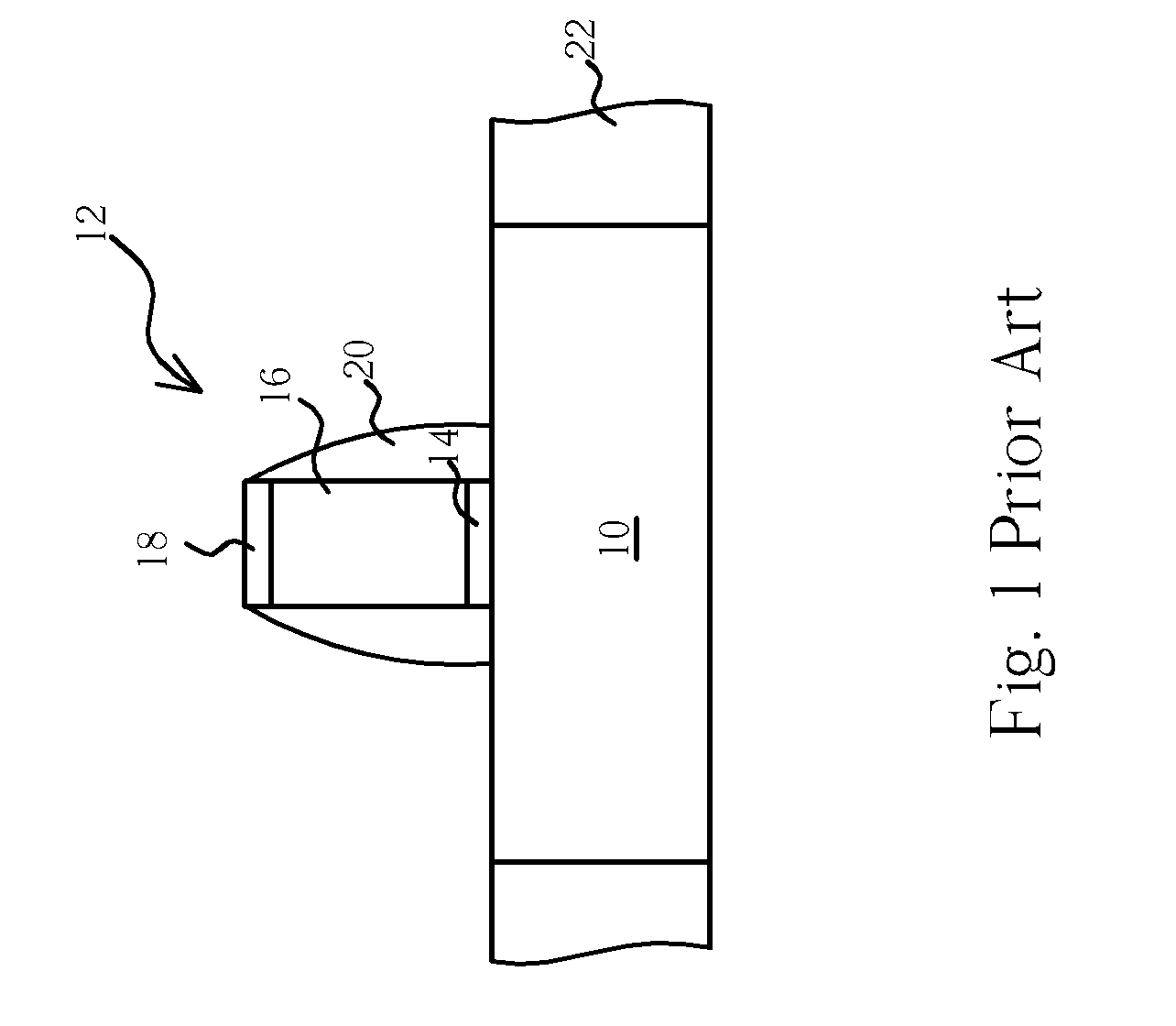Method of fabricating strained-silicon transistors
a technology of strained silicon and transistors, applied in the direction of semiconductor devices, electrical equipment, basic electric elements, etc., can solve the problems of difficult optimization of nmos and pmos transistors separately, the lithographic technology's limit of miniaturization, and the above technique still suffers, so as to increase the stress and move of electrons, the effect of rapid thermal annealing process
- Summary
- Abstract
- Description
- Claims
- Application Information
AI Technical Summary
Benefits of technology
Problems solved by technology
Method used
Image
Examples
Embodiment Construction
[0019] Please refer to FIG. 4 through FIG. 6. FIG. 4 through FIG. 6 are perspective diagrams showing the means of fabricating a strained-silicon PMOS transistor according to the present invention. As shown in FIG. 4, a semiconductor substrate 60, such as a silicon wafer or a silicon-on-insulator (SOI) substrate, is provided and a gate structure 63 is formed on the semiconductor substrate 60, in which the gate structure 63 includes a gate dielectric 64, a gate 66 disposed on the gate dielectric 64, a cap layer 68 formed on the gate 66, an oxide liner 67 disposed around the gate 66, and a spacer 70 formed on the oxide liner 67. Preferably, the gate dielectric 64 is composed of silicon dioxide via oxidation or deposition processes, the gate 66 is composed of doped polysilicon, and the cap layer 68 is composed of silicon nitride for protecting the gate 66 or polycide. Additionally, a shallow trench isolation (STI) 62 is formed around the active area of the gate structure 63 within the s...
PUM
| Property | Measurement | Unit |
|---|---|---|
| temperature | aaaaa | aaaaa |
| temperature | aaaaa | aaaaa |
| temperature | aaaaa | aaaaa |
Abstract
Description
Claims
Application Information
 Login to View More
Login to View More - R&D
- Intellectual Property
- Life Sciences
- Materials
- Tech Scout
- Unparalleled Data Quality
- Higher Quality Content
- 60% Fewer Hallucinations
Browse by: Latest US Patents, China's latest patents, Technical Efficacy Thesaurus, Application Domain, Technology Topic, Popular Technical Reports.
© 2025 PatSnap. All rights reserved.Legal|Privacy policy|Modern Slavery Act Transparency Statement|Sitemap|About US| Contact US: help@patsnap.com



